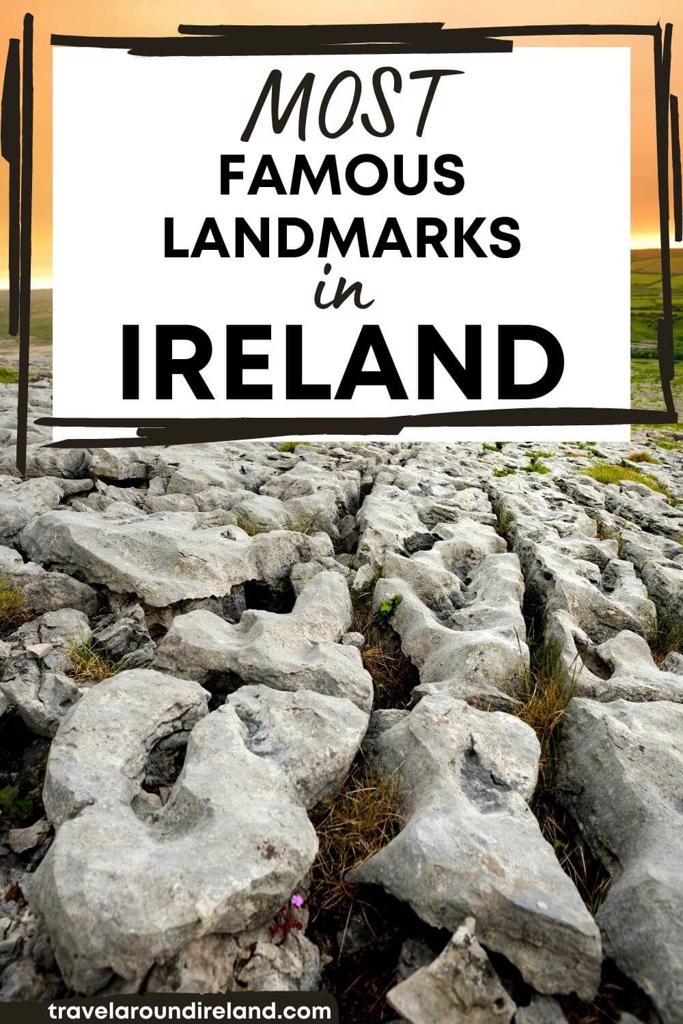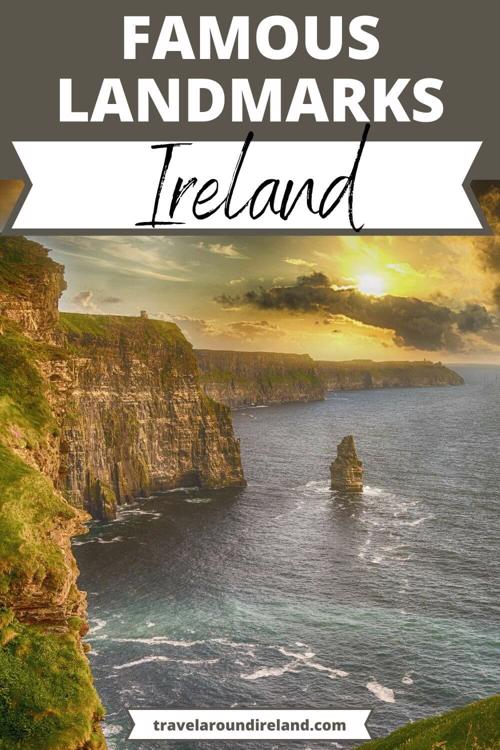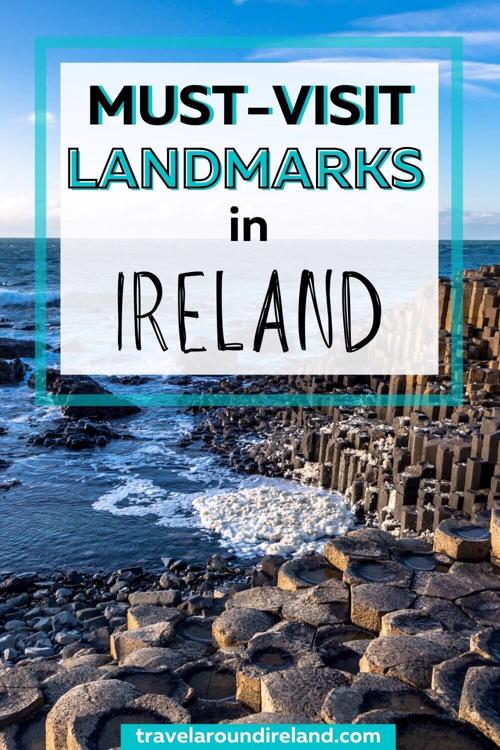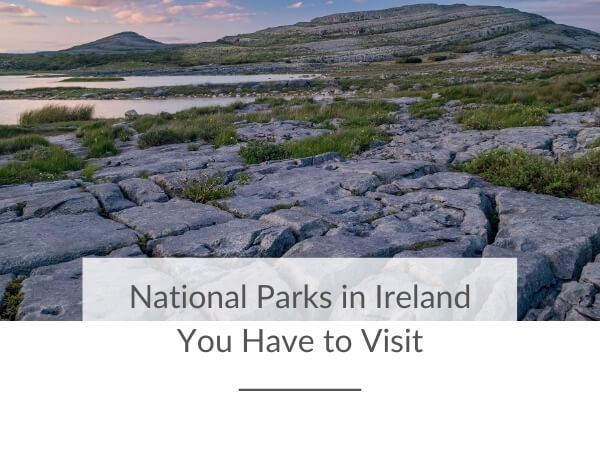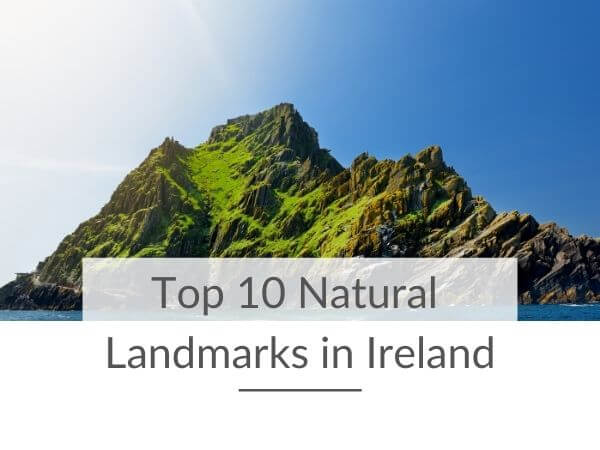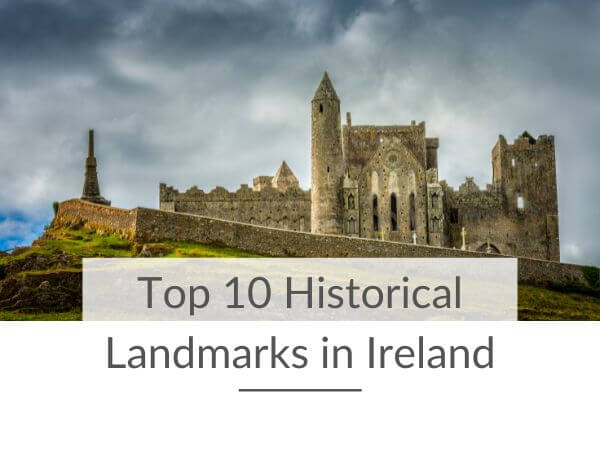When it comes to Ireland landmarks, there are some that spring to mind immediately. And some famous landmarks of Ireland are on everyone’s Ireland bucket list. If you are looking to visit some of the best places in Ireland, then this list of the most famous landmarks in Ireland will help you and anyone else planning a trip to the Emerald Isle.
When it comes to famous landmarks, Ireland is not short of a few. From natural landmarks in Ireland such as the Cliffs of Moher to historical and man-made ones, there is plenty on offer to fuel everyone’s wanderlust, whether you are based on the Emerald Isle and looking for somewhere new to discover, or if you are planning a visit and looking to add to your itinerary.
In this post, you will discover 10 of the best and most famous sites in Ireland covering the length and breadth of the country. Most you will have heard of or read about, but you might come across a new one to add to the bucket list.
Most famous landmarks in Ireland
The Rock of Cashel, Tipperary
One of the most popular tourist attractions in Southern Ireland is the Rock of Cashel. Overlooking the Tipperary countryside, this famous historic landmark in Ireland often features top of the list for bucket-list destinations in Ireland.
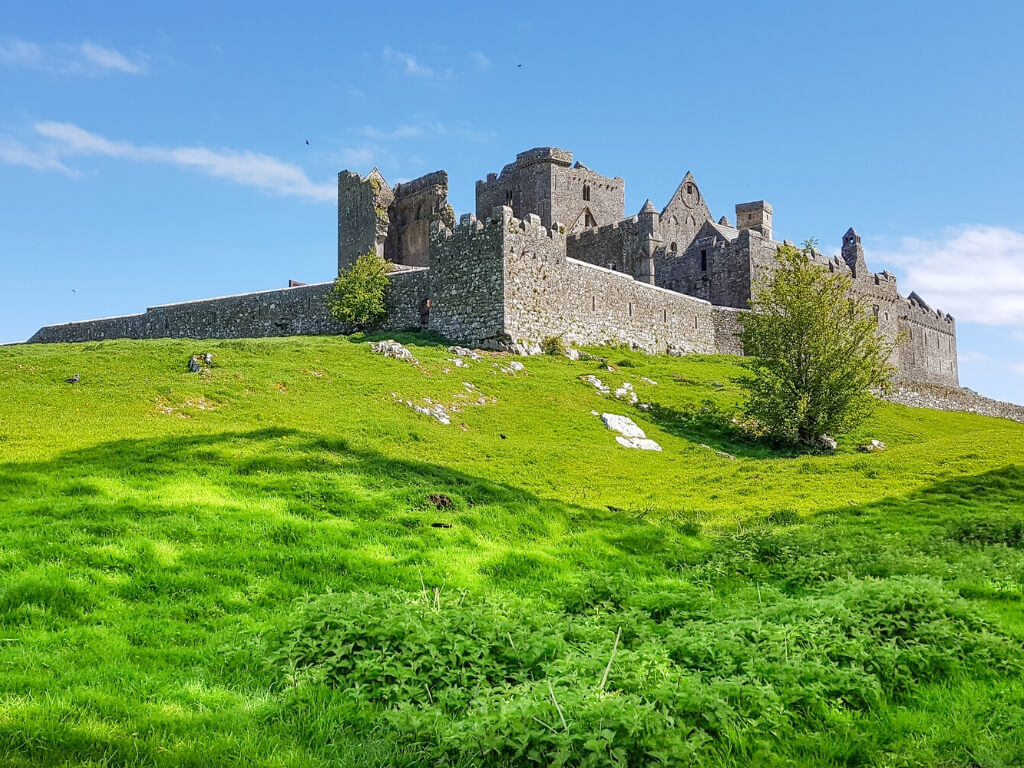
Imposing looking atop its hill, the Rock of Cashel overlooks the landscape below and is somewhere most people visiting Ireland want to go. Also known as Cashel of the Kings, and St Patrick’s Rock, the Rock of Cashel was once the seat of the High Kings of Ireland.
It was donated by a High King to the Church in the 12th century and contains many buildings to explore. Its oldest building is a well-preserved round tower dating from the early 12th-century. As well as this, there are other buildings of note including Cormac’s Chapel, built from sandstone, the cathedral which is the predominated building that can be seen from miles around, and the graveyard which contains many fine examples of Irish Celtic crosses.
Work on the cathedral began in the 12th-century and continued over the centuries. However, its roof was removed by an Anglican Archbishop in the mid-18th century, and it has remained roofless ever since. The curved beams of the original roof remain, giving visitors a taste of what it might have looked like.
Location: St. Patrick’s Rock of Cashel, Cashel, Co. Tipperary, E25 KX44
Giant’s Causeway, Antrim
One of the most famous landmarks in Northern Ireland also happens to contain the most famous rock formations in Ireland. The Giant’s Causeway is another bucket-list destination for visitors to the Emerald Isle, and when you see pictures, it is easy to see why.
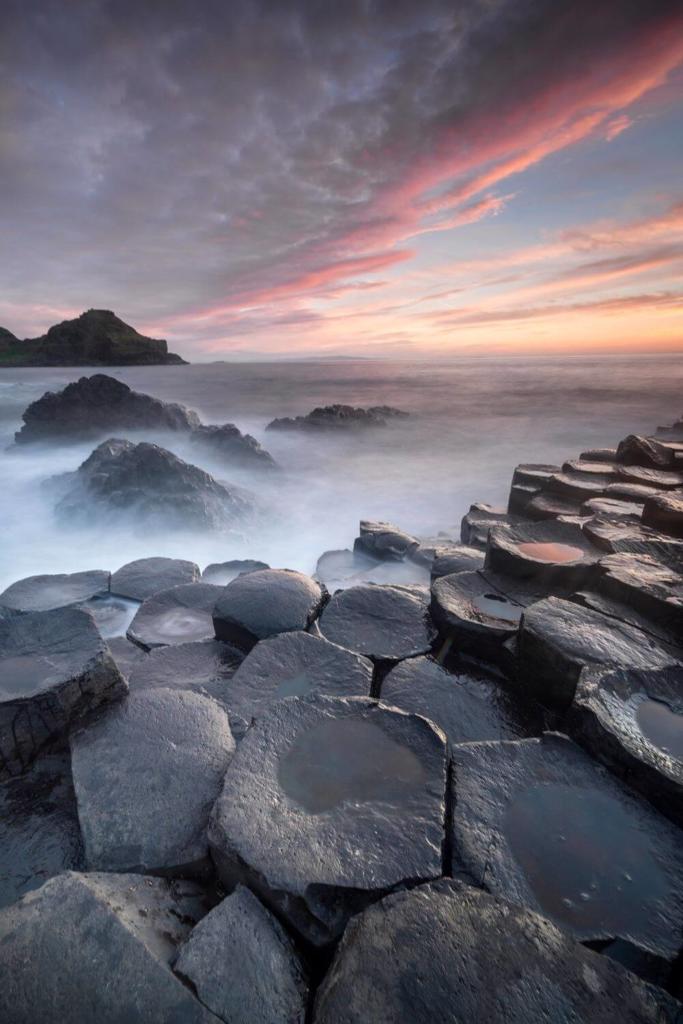
Located in County Antrim, the Giant’s Causeway is a UNESCO World Heritage site and is managed by the National Trust. Consisting of over 40,000 interlocking basalt columns, this landmark of Ireland is another one of the most popular places to visit.
Created by a volcanic fissure eruption between 50 and 60 million years ago, these unusual rock formations spark the interest of everyone who sees them, either in person or in pictures.
Although we now know how they were formed, Irish legends said they were the remains of a causeway bridge created by a giant, Fionn mac Cumhaill. He was challenged to a fight by a Scottish giant. When it was accepted Fionn built the causeway bridge so they could meet. However, when Fionn realised his opponent is much bigger than he, he disguised himself as a baby and when his opponent saw the ‘baby’ of Fionn mac Cumhaill, he believed the father must be a giant among giants and fled back across the causeway, destroying the bridge as he went.
As there are identical rocks on the island of Staffa in Scotland across the sea, these may have influenced the legend that is still retold to children in Ireland today.
When it comes to Northern Ireland landmarks, you cannot get any more famous than the Giant’s Causeway. Visitors can walk across the basalt columns and can stop at the visitors’ centre where they can learn more about the formation of the rocks and the flora and fauna in the area. There are guided tours to join (these and the visitors’ experience must be pre-booked), trails along the paths that lead to the rocks, and a few other sights to see.
Location: 44 Causeway Road, Bushmills, Co. Antrim, BT57 8SU (UK)
Benbulbin, Sligo
One of the most famous landmarks of Ireland is also one of its most unique. Often referred to as Ireland’s Table Mountain, Benbulbin is the most distinctive mountain on the Emerald Isle.
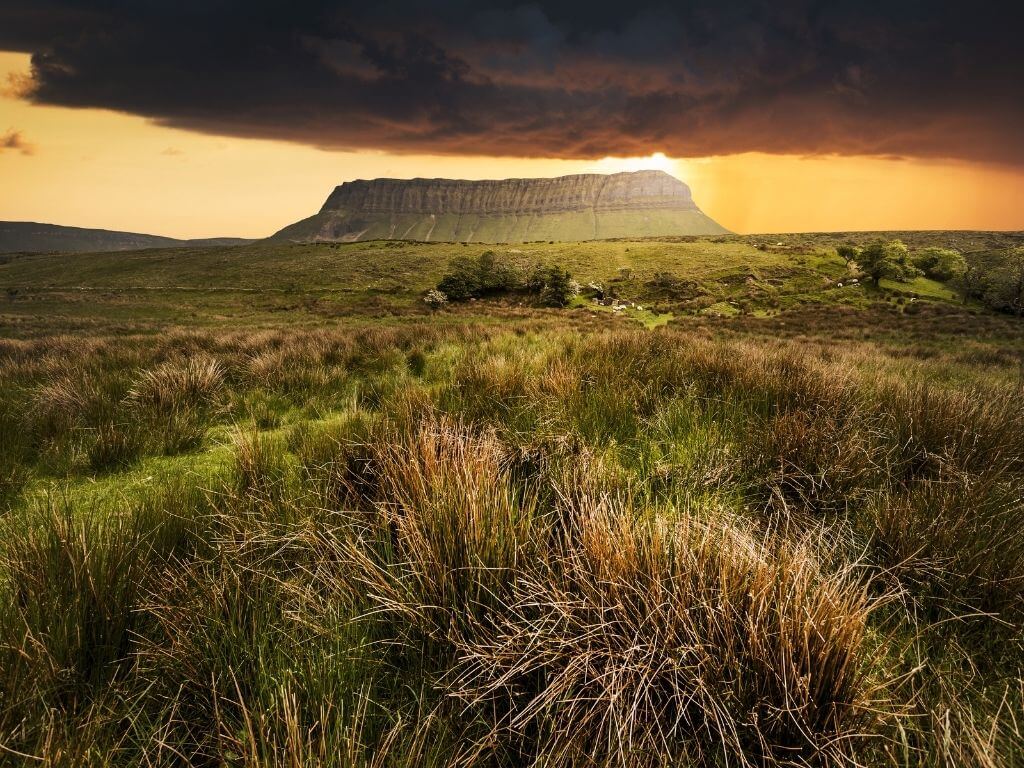
Also called Benbulben, this flat-topped rock formation is located in County Sligo and is part of the Dartry Mountains. It was shaped during the Ice Age when Ireland was under glaciers. Originally a plateau, the distinctive shape was formed when glaciers moved southwest to form its present shape.
Benbulbin is a protected site and is a popular climbing destination in the county. It can be climbed from both the north and south faces, with the south being the easiest thanks to being sheltered from the worst of the high winds and storms that roll in from the Atlantic Ocean. Those who summit this unusual natural landmark in Ireland will be afforded some spectacular views on clear days.
Whether you choose to climb Benbulbin or not, it is one of the most unusual natural sights to see in Ireland, so go prepared with your camera at the ready.
Location: Benbulbin, Cloyragh, Co. Sligo
Cliffs of Moher, Clare
Of all the famous landmarks in Ireland, there are none more famous than the Cliffs of Moher. Standing 214 metres above the Atlantic Ocean at their highest point, north of O’Brien’s Tower, the Cliffs of Moher are also one of Ireland’s most popular tourist attractions.
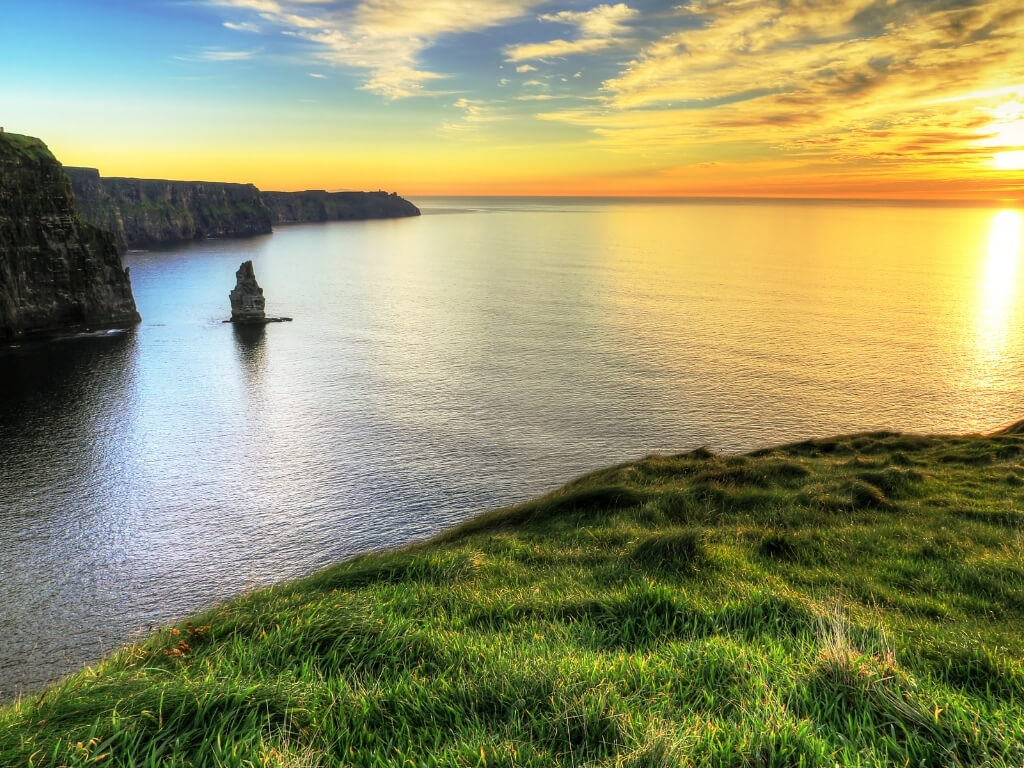
Located along the Atlantic coast in County Clare, these natural sea cliffs run for 14 kilometres between the villages of Doolin and Liscannor.
Their name comes from an old defensive fort that once stood where Hag’s Head is to the south, called Mothar (Moher). The cliffs have been formed over millions of years due to erosion and are an awe-inspiring sight.
Visitors can enjoy walks along the paths that follow the tops of the cliffs, see interactive displays, learn about the flora and fauna of the cliffs in the Visitors’ Centre, or enjoy views across Galway Bay on clear days as far as the Aran Islands, and even the Twelve Bens peaks in Connemara.
While the cliffs themselves are free to visit, parking at the sight is payable and includes entry to the visitors’ centre. There are some other parking options in the surrounding area, but this may involve a walk to reach the cliffs.
Location: North Liscannor Co. Clare, V95 KN9T
The Burren, Clare
If it is natural Irish landmarks you are looking for, you won’t be disappointed by a visit to the Burren National Park. With its unique lunar-like landscape, this area is also one of the National Parks of Ireland.
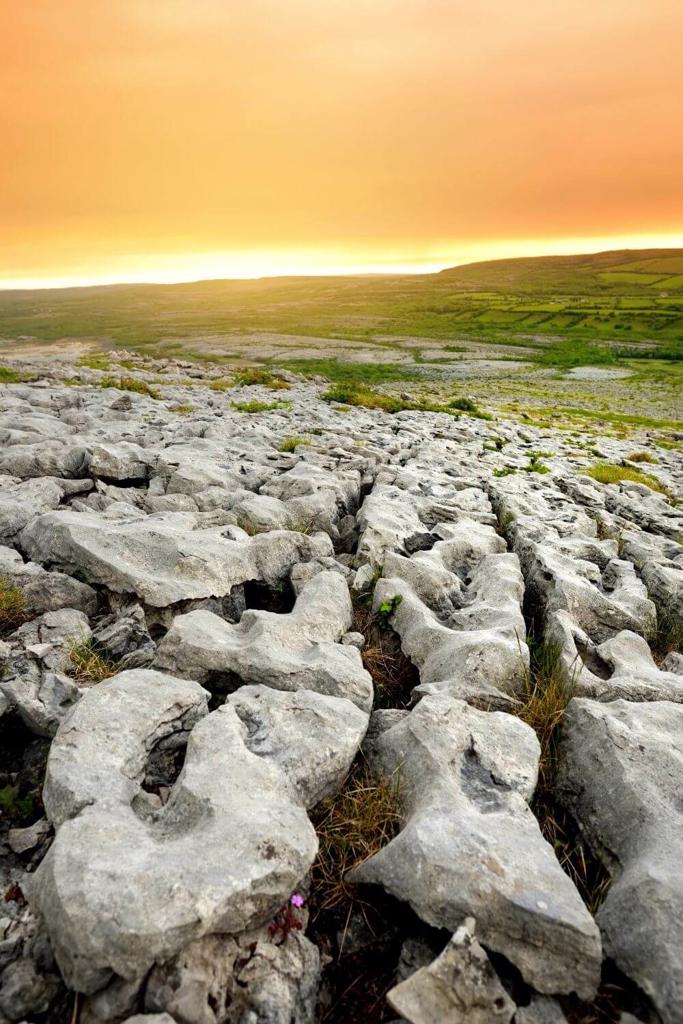
1,500 hectares of bog, forests, mountains, heath, and grasslands await those who venture into this area of the West of Ireland, which is also a great place to visit on a day trip from Galway City.
The Burren is a popular landmark of Ireland that people often combine with trips to the Cliffs of Moher, mentioned above, as they are located within 40 minutes of one another in County Clare.
Visitors can enjoy walks along the many trails, visit ring forts, portal tombs such as the Poulnabrone Dolmen, and potentially spot some of the inhabitants of Ireland’s smallest National Park such as pine martin, foxes, and otters along the coastline.
The Burren, with its exposed karst limestone landscape which formed millions of years ago under a sea, is a truly unique landmark in Ireland worth visiting.
Location: Burren National Park, Clare Heritage Centre, Corofin, Clare, V95 T9V6
Glendalough Round Tower, Wicklow
One of the most famous historical sites in Ireland is Glendalough and its Round Tower. The area of Glendalough in County Wicklow is a glacial valley where the monastic site of the same name can be found.
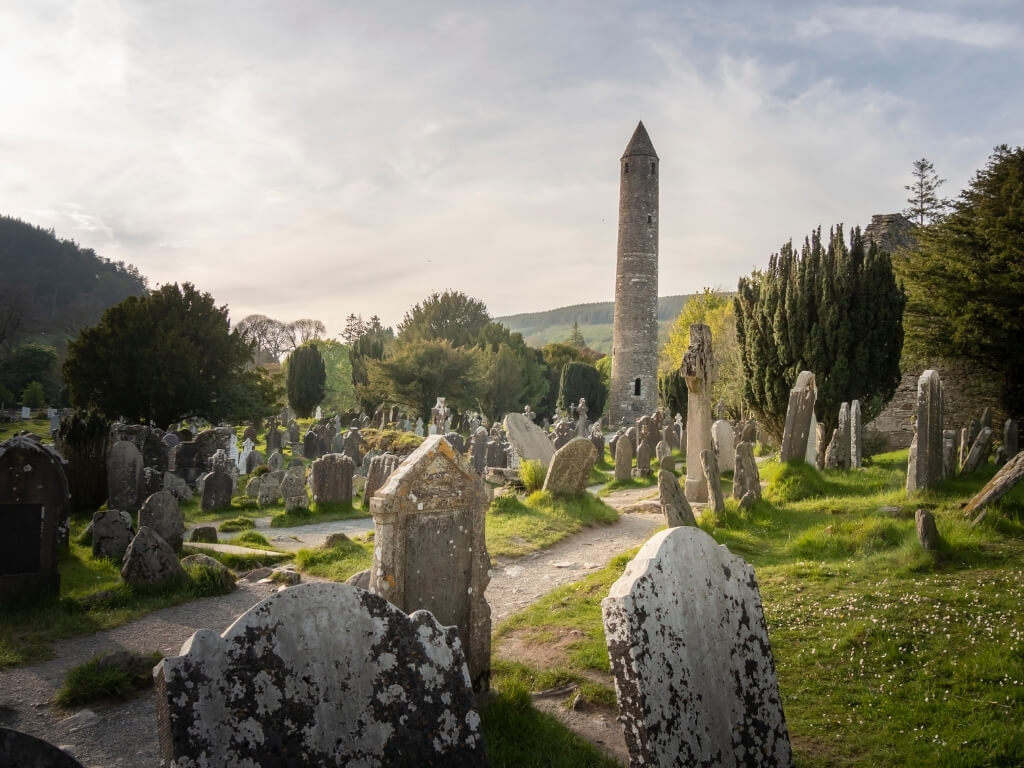
Its famous early medieval monastic site was founded in the 6th century by Saint Kevin, son of one of the ruling families of Leinster at the time. It remained an ecclesiastical site until its destruction by English forces in the late 14th century, although it has remained a place of pilgrimage and importance ever since.
Glendalough is probably most famous for its Round Tower, standing 30 metres high. Its entrance is 3.5 metres from the base. Although its roof was rebuilt in the late 19th century, it was done with the original stones.
Visitors can also explore other religious buildings such as St Peter and St Paul’s Cathedrals, the largest buildings at this historical landmark of Ireland. There are also several smaller churches, and buildings to visit. Close to the site, there is also a miner’s village, remnants of the galena lead mine in the area during the 19th and early 20th centuries.
Glendalough is also a place of natural beauty, with two lakes that have walking trails around them. You will also find an amazing waterfall in the woods surrounding the lakes, the Poulanass Waterfall. The woods are a serene and peaceful place to visit while in Glendalough, and if you visit during late Spring, you may be greeted by a carpet of bluebells, some of the best in Ireland.
As well as visiting the monastic site and walking some of the trails, visitors can enjoy incredible views across the lakes from The Spinc viewing platform, partake in rock climbing or pass through while walking the Wicklow Way.
Location: Glendalough Visitor Centre, Derrybawn, Glendalough, Co. Wicklow, A98 HC80
Slieve League, Donegal
While they are not the most famous cliffs in Ireland, the cliffs of Slieve League are gaining in popularity and can often be a quieter affair than their more famous counterparts in Clare.
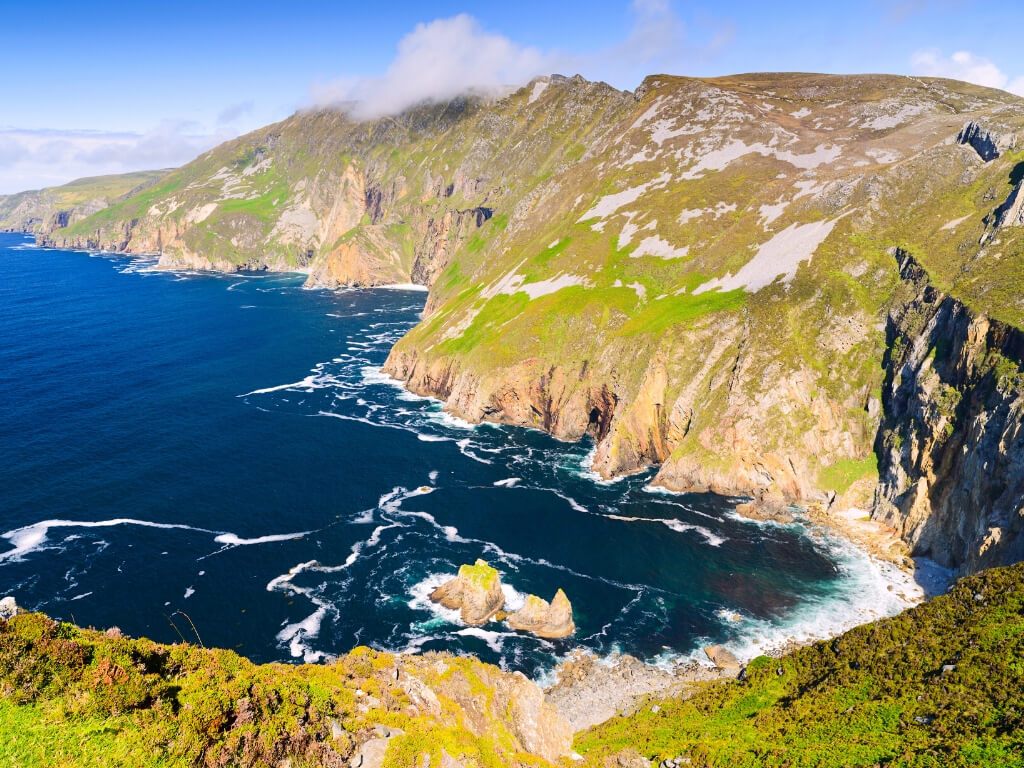
Located along the Wild Atlantic Way in County Donegal, these sea cliffs which rise majestically out of the Atlantic Ocean are taller than the Cliffs of Moher at 596 metres at their highest.
Many visitors hike to the top of the cliffs to enjoy spectacular views of the Atlantic Ocean, the Sligo Mountains and Donegal Bay. Visitors to the area can also enjoy the cliffs from boat tours that depart from nearby Teelin Harbour. If you choose this option, watch out for pods of dolphins during your trip.
While there is not much to do at the cliffs, there are several trails to walk affording you great views for your efforts. So, if you are looking for other natural landmarks in Ireland to visit, head to Donegal for the Slieve League cliffs.
Location: Slieve League Cliff Experience and Visitor Centre, Bunglas Road, Lergadaghtan, Teelin, Co. Donegal, F94 W8KC
Torc Waterfall, Kerry
One of the most beautiful waterfalls in Ireland is the Torc Waterfall, a natural landmark that is very popular with visitors to Killarney and the Ring of Kerry.
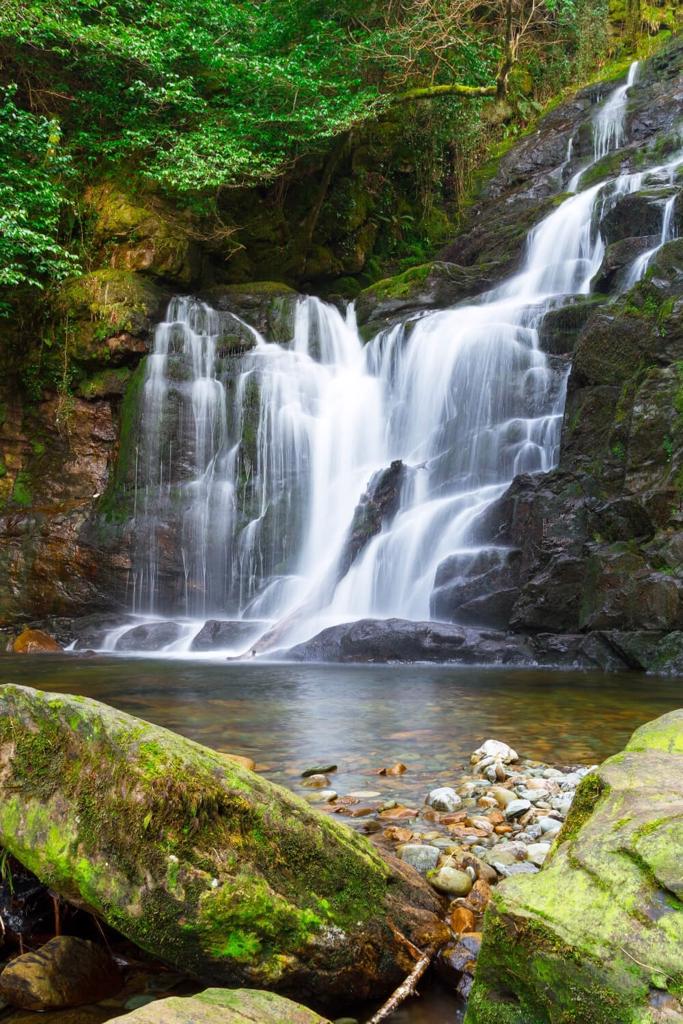
Called Easach Toirc in Irish, which means cascade of the wild boar, is a 20m high waterfall located in the Killarney National Park. This long cascade waterfall is formed by the Owengarriff River from a corrie lake above and lies at the base of the Torc Mountain.
Located just 7 kilometres from Killarney Town, this waterfall is a popular landmark in the region for visitors. The waterfall is located 200 metres from the car park and is accessed along a variety of looped trails for people with various abilities. Nearby, visitors can climb to viewing points for views across the Killarney lakes.
Many visitors to the Torc Waterfall combine it with visits to nearby Muckross House and Abbey. It is a great place to visit just off the Ring of Kerry.
Location: Cloghereen Upper, Killarney, Co. Kerry
Blarney Castle and Stone, Cork
One of the most popular tourist attractions on the Emerald Isle is Blarney Castle, and in particular, the Blarney Stone. This famous landmark of Ireland attracts thousands of visitors every year for mainly one reason, the Blarney Stone.
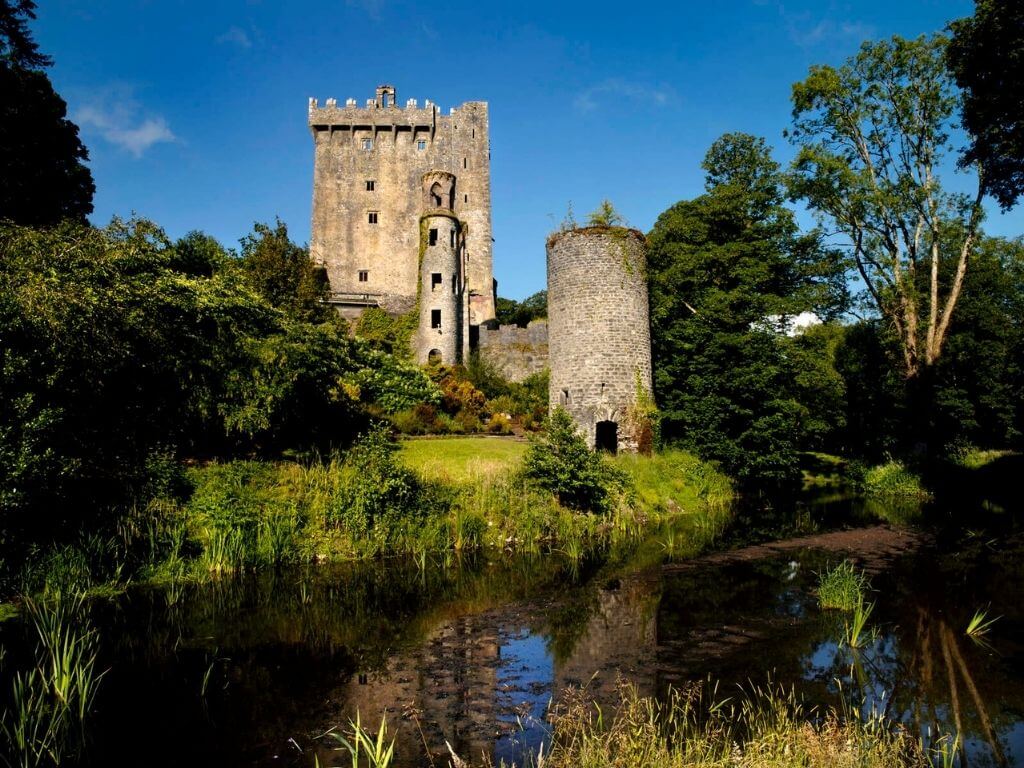
Blarney Castle is a medieval stronghold located about 20 minutes from Cork City and is one of the top things to do in County Cork. A castle has been on the site since the 13th century, although the current structure dates from the mid-15th century.
Although Blarney Castle is a partially ruined structure, some rooms and the battlements are still accessible, and it is at the top of the castle where you will find what everyone comes to see, the Blarney Stone.
It is said that those who kiss the Blarney Stone will be bestowed with the gift of eloquence or the gift of the gab. Whether or not it is true remains to be seen but nevertheless, the Blarney Stone attracts thousands of people every year. And it is no mean feat to kiss it, as you need to hang upside-down over a sheer drop in order to do so.
Blarney Castle is also surrounded by magnificent grounds and gardens including a poison garden, fern garden, two waterfalls and an arboretum. Visitors can also view Blarney House from the outside (it is still a private residence). So, if it is historical landmarks you want to visit, head to Blarney.
Location: Monacnapa, Blarney, Co. Cork
Newgrange Passage Tomb, Meath
One of the best national monuments of Ireland to visit is the Newgrange Passage Tomb in the Brú na Bóinne Valley. This area of Ireland is a UNESCO World Heritage Site due to the historical importance of the landscape and many Neolithic and Megalithic tombs that can be found there. And one of the most important is Newgrange.
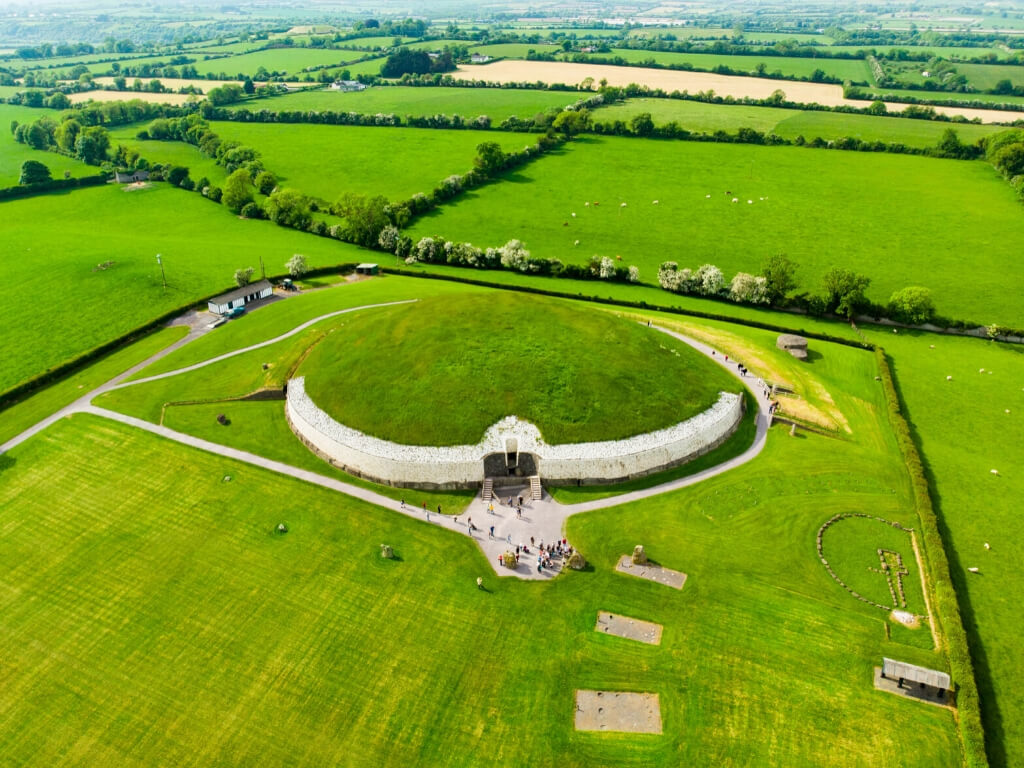
So-called due to its location along the Boyne River, this historical site is located just 8 kilometres from Drogheda and 40 kilometres from Dublin, making it a popular day trip from the Irish capital. The Brú na Bóinne area contains many passage chambers, tombs, standing stones, and other prehistoric enclosures.
Newgrange, Knowth and Dowth are the largest of the Megalithic passage tombs. Knowth is a Neolithic passage grave of one large mound and seventeen smaller mounds and has two passage chambers. Dowth is another passage tomb but is less developed as it is lower in the ground and can only be visited and seen from above ground.
Newgrange is the most famous of these passage tombs and chambers. Older than the pyramids and Stonehenge, it is aligned with the winter solstice, during which time the passage is illuminated all the way to the burial chamber during sunrise. Members of the public can enter Newgrange throughout the year, but during the winter solstice, only a small number of people, chosen via a lottery, can witness the sight.
The Brú na Bóinne Valley Monuments are one of the best ancient landmarks to visit in Ireland and can easily be done during a stay in Dublin. Note that visitors can only access the site via approved and official tours leaving from the Visitor Centre.
Location: Brú na Bóinne, Glebe, Donore, Co. Meath, A92 EH5C
Whether you are looking to visit historical places in Ireland or natural wonders, these are the most famous landmarks in Ireland to add to your list. With choices across the Emerald Isle, no Ireland itinerary would be complete without adding at least one of these to it.
